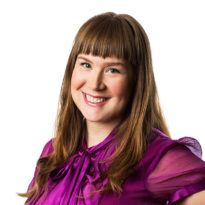Dreaming and creating are innate human abilities that allow us to design our futures. We are able to imagine how things can be radically different from what they are today and help to achieve future goals.
For example, many of us have dreamed of our next holiday, our next career moves or planning to start a family. This type of thinking does not feel foreign or difficult to grasp. From a very young age, most of us are taught to think about the future from the first time we are asked, ‘What do you want to be when you grow up?’
Children create answers guided by what they know, such as a firefighter, teacher, or ballerina. Every answer is based on their knowledge of the world and their current experience.
Think about your answer to this question as a five-year-old and compare it to your career today. Is your career what you thought it would be? For most of us, that answer is no. Many of us are doing jobs that didn’t even exist when we were children.
That means we got it wrong. This is what happens when we try to predict the future. When we draw a straight line from where we are today to a future date, we don’t give ourselves many options. It doesn’t consider how we and the world changes over time. A single future can only be created based on what we know today, and that knowledge is very limited.
This is why predicting the future doesn’t work. It is impossible to know what lies ahead; while we can guess or speculate, we will not know until we arrive. Futures thinking is a critical skill set that teaches us to think about the future beyond one linear possibility. Instead, it allows us to see the future as a spectrum, a series of options based on speculations rather than a single prediction.
Neither as five-year-olds nor as adults can we control the future. That is why we must not limit ourselves to imagining or saying there is just one option before us. If our five-year-old self dictated our future, we might not be in the profession we are now. Instead, we developed a career based on the options and opportunities that appeared before us over time. We harnessed our ability to imagine different scenarios and chose the one we most desired.
The Future Vs Futures
Designing desirable futures is an important skill set. We just learned the first lesson, which is understanding the difference between a ‘future’ and ‘futures’:
FUTURE
The “future”, in the singular, refers to the unit of time following the present.
Past> present > future example: in the past, we rode horses; in the future, we will ride individual drones.
FUTURES
“Futures” plural refers to the different possibilities within the unit of time “future” that allows for the possibility of multiple different scenarios.
Future A + future Z + future K = futures
Example: one of the possible futures is for manual cars to cease to exist.
The second important lesson is that futures thinking applies to more than planning our personal life; it extends to creating strategies for organisations, businesses, and governments. When we use futures thinking in the context of business, we are applying a new strategic lens. Imagining a variety of new opportunities and threats creates a robust ability to mitigate risks and explore new possibilities.
When applying futures thinking to a business, here are some examples of questions that prompt the creation of multiple future scenarios:
- How will emerging technologies affect innovation in my industry?
- What emerging technologies should I invest in to stay ahead of the competition?
- What is happening now that could impact the way we do business ten years from now?
The benefits of thinking ahead aren’t just limited to companies; they are necessary to solve complex social issues. According to the World Economic Forum (2020), Futures Literacy, or being futures literate, is one of the top four skills needed to make the world a better place after COVID-19. Our ability to imagine and project futures, whether for companies, governments or ourselves, is critical for designing a more equitable world..
One thing is certain; whether we are ready for it or not, the future will arrive. The ability to think about the future as a set of multiple pathways allows us to develop strategies that anticipate the consequences of various alternative futures. This allows for space to build a better, more inclusive, sustainable, and conscious world – the future we desire.
This is why we have developed a free Futures Toolkit. This toolkit teaches the foundations of what futures thinking is, the Echos Futures Methodology and how it is applied through practical tools. We will release this toolkit in three sections throughout November and December this year.
Subscribe to our newsletter to get each segment delivered to your inbox throughout the rest of 2022. This toolkit will start you on a journey toward a future full of options. Learn to see the future as multiple pathways based on your vision of what is possible. The best way to move toward your desired future is to think about it as happening now, not in the far off distance.
“The way you imagine the future changes your actions in the present time. So it’s not just the present that builds the future. The future also builds the present.” – Thomas Frey, Communicating with the future
The first part of changing today to reach a desirable tomorrow is to upskill in futures thinking. Download the first instalment covering Part 1 – Introduction to Futures Thinking And
Part 2 – Futures Literacy and The Echos Methodology here.


